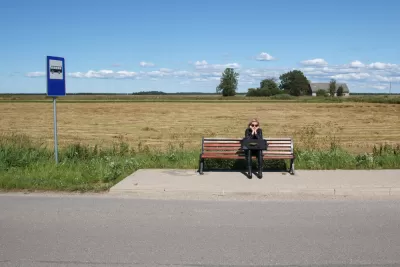The U.S. Census Bureau raised the bar for communities to qualify as urban areas.

A change in definition by the U.S. Census Bureau has reclassified nearly 1,000 “urban areas” in the United States, defined by the U.S. Census Bureau as “densely developed residential, commercial, and other nonresidential areas.”
According to an announcement on December 29, the Census Bureau has changed the criteria to fit that definition, most notably by raising the minimum population threshold for an urban area from 2,500 to 5,000 or a minimum housing unit threshold of 2,000 housing units.
Other criteria changes include reducing the “jump distance” from 2.5 miles to 1.5 miles (jump distance “is the distance along roads used to connect high-density urban territories surrounded by rural territory,” according to the press release) and no longer distinguishing between urbanized areas and urban clusters.
After the change, urban areas account for 80.0% of the U.S. population, down from 80.7% in 2010, according to the press release. “The rural population — the population in any areas outside of those classified as urban — increased as a percentage of the national population from 19.3% in 2010 to 20.0% in 2020.”
The press release states clearly that shifting population ratios in the country are a result of the change of definition—not a shift of population from urban to rural (though there is some evidence of such a trend in recent years).
The Associated Press provided news coverage of the criteria change. For more information on the population estimates published by the Census in December, see previous Planetizen coverage.
FULL STORY: Nation’s Urban and Rural Populations Shift Following 2020 Census

Alabama: Trump Terminates Settlements for Black Communities Harmed By Raw Sewage
Trump deemed the landmark civil rights agreement “illegal DEI and environmental justice policy.”

Planetizen Federal Action Tracker
A weekly monitor of how Trump’s orders and actions are impacting planners and planning in America.

The 120 Year Old Tiny Home Villages That Sheltered San Francisco’s Earthquake Refugees
More than a century ago, San Francisco mobilized to house thousands of residents displaced by the 1906 earthquake. Could their strategy offer a model for the present?

In Both Crashes and Crime, Public Transportation is Far Safer than Driving
Contrary to popular assumptions, public transportation has far lower crash and crime rates than automobile travel. For safer communities, improve and encourage transit travel.

Report: Zoning Reforms Should Complement Nashville’s Ambitious Transit Plan
Without reform, restrictive zoning codes will limit the impact of the city’s planned transit expansion and could exclude some of the residents who depend on transit the most.

Judge Orders Release of Frozen IRA, IIJA Funding
The decision is a victory for environmental groups who charged that freezing funds for critical infrastructure and disaster response programs caused “real and irreparable harm” to communities.
Urban Design for Planners 1: Software Tools
This six-course series explores essential urban design concepts using open source software and equips planners with the tools they need to participate fully in the urban design process.
Planning for Universal Design
Learn the tools for implementing Universal Design in planning regulations.
Clanton & Associates, Inc.
Jessamine County Fiscal Court
Institute for Housing and Urban Development Studies (IHS)
City of Grandview
Harvard GSD Executive Education
Toledo-Lucas County Plan Commissions
Salt Lake City
NYU Wagner Graduate School of Public Service





























